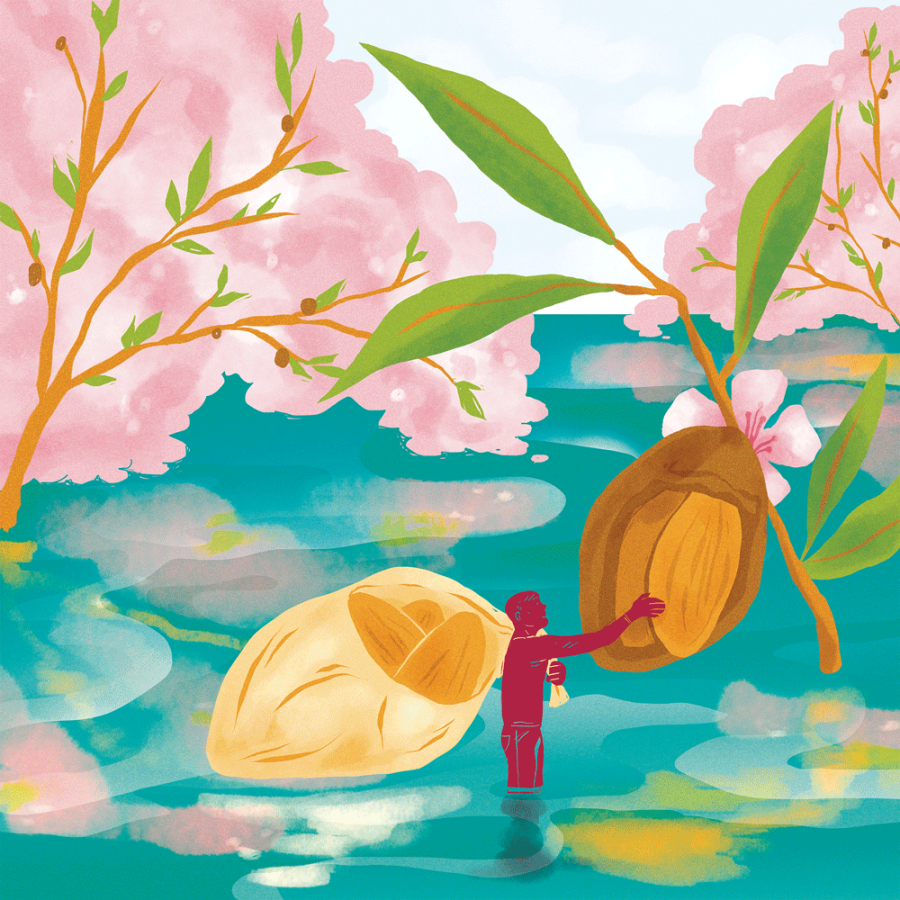The drought through the eyes of an almond farmer
July 8, 2015
Almonds have been a topic of debate ever since the drought became a serious issue. According to Business Insider it takes farmers one gallon of water to produce a single almond. This situation begs the question: What would happen if farmers in California stopped growing almonds?
Two-thirds of the almonds that are produced in California are exported to the rest of the world accounting for eighty percent of almonds for the entire world, according to NPR. Almonds brought in $11 billion to the state’s economy in 2014, according to a study by UC Davis.
Farmer Joe Del Bosque, president of Del Bosque farms in Fresno County has a 2,000-acre farm in the San Joaquin Valley, one-third of which is made up of almond trees.
We’ve had reductions every year except two, only two years I think that we’ve had our full hundred percent contract supply.
— Joe Del Bosque
“Well you know the way things are going right now almonds are the only crop that can afford to pay the high costs of water right now,” commented Del Bosque.
Despite the large amount of water required to produce a single almond, the crops aren’t using any more water than they have in the past and have been forced to use less each year for decades according to Del Bosque.
He added that when Governor Jerry Brown announced that cities had to reduce their water usage by 25 percent, the outrage and complaints about farmers’ water usage was a misfire.
“They don’t realize that farms, especially here, we’ve had reduction since 1990,” said Del Bosque. “We’ve had reductions every year except two, only two years I think that we’ve had our full hundred percent contract supply.”
Even if California were to see average rainfall for the rest of this year, Del Bosque predicts it will not be enough to change the water reductions and explains how much water costs have risen for farmer like him, “Water that year was about a hundred and thirty dollars per acre foot, today if you can find it, if you can find it, it’s thirteen hundred and up.” Almonds are one of the only crops that can afford to pay these extremely spiked costs of water.
In addition, according to National Geographic the water being used to produce the almonds is all coming from the Central Valley Project designed originally for farmers and is being distributed through highly efficient irrigation systems.
“They’re looking for a scapegoat, okay, that’s what it is,” Del Bosque contends. Without growing almonds to afford the high water costs, farmers like Joe wouldn’t be able to afford water for other vital crops produced primarily here in California. According to him, California produces 95 percent of the nation’s tomatoes, which he explains are used for salsa, paste, sauce and ketchup.
“You know stewed tomatoes, diced tomatoes, on and on and on and on and on, and we do use it a lot, we produce thirteen million tons of processing tomatoes,” he said.
Del Bosque worries that if this drought continues, the future of almonds and the rest of his fruit and vegetable crops will shut down, posing a large threat to the millions of people his farm feeds.
“You can grow a lot of the stuff around the country, but you’re not gonna feed cities of millions of people with these little farms dotting around the side, you’ll feed a few people and that that’s alright, but the masses you’re not gonna feed em,” Del Bosque said.
This next year will be a crucial one for farms in the Central Valley and raises major concerns for farmers like Joe Del Bosque and according to him, “Next year looms as a potential disaster for us.”
















